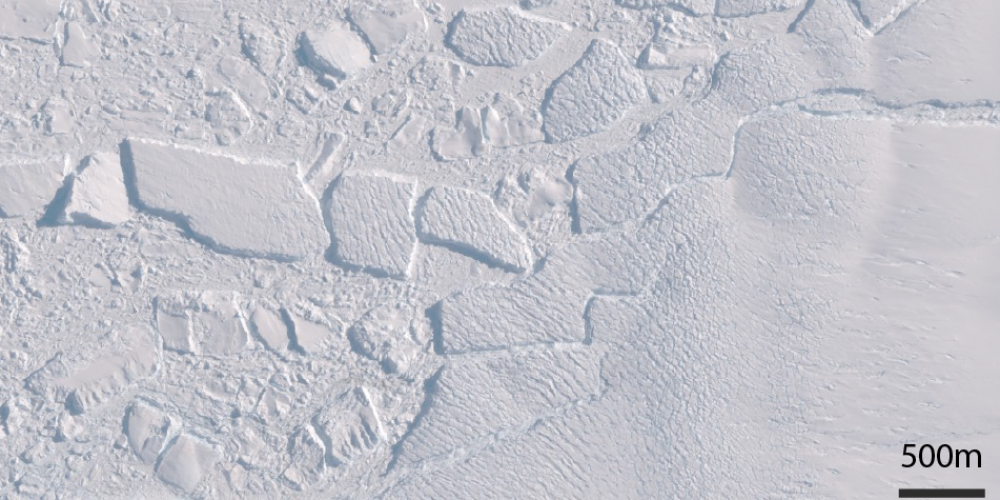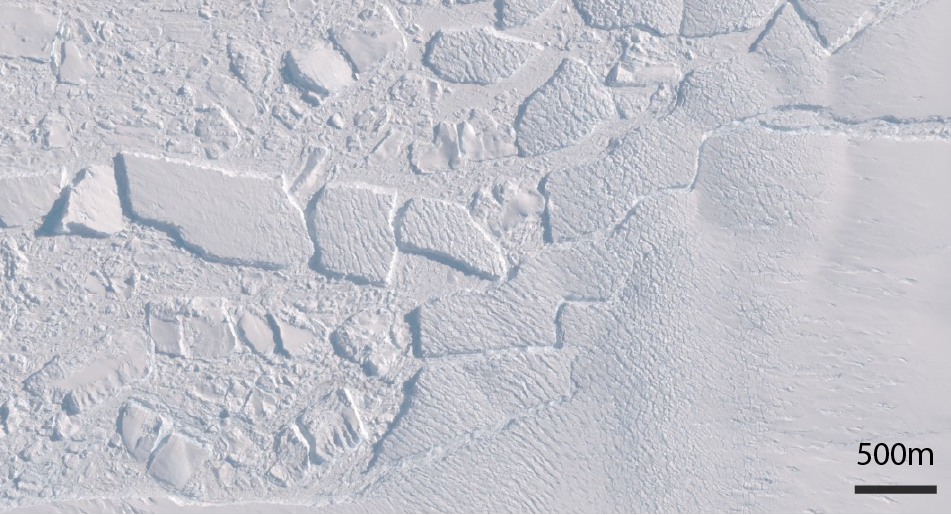

The Thwaites ice shelf, at the ice front where (large) icebergs calve. The ocean is covered with sea ice. (Source: Copernicus Browser)
Maaike Izeboud, a PhD graduate from TU Delft, nowadays postdoc at the Free University of Brussels (VUB), developed a new evolving ‘fracture map’ of Antarctica, based on satellite images, with her fellow researchers at TU Delft. This enabled them to explore how damage may evolve under different warming scenarios. The results are published in Nature Climate Change.
They found that in a future with continued high greenhouse gas emissions, damage to ice shelves is expected to accelerate. There is a glimmer of hope: in scenarios where emissions are drastically reduced, the ice shelves remain stable, helping to slow down Antarctica’s contribution to sea level rise
Ice shelves are the floating extension of the Antarctic ice sheet. They govern the mass loss of the ice sheet by providing resistance to the grounded ice, thereby modulating the ice flow to the ocean. When ice shelves weaken or collapse, more ice flows into the ocean, which increases Antarctic mass loss and contributes to sea level rise. Damage processes are complex and not often incorporated in large scale ice sheet models. With this study the researchers emphasize that it is important to do so, to better predict future sea level.
Maaike Izeboud, who completed her PhD last year at TU Delft and now works at VU Brussels: “You can clearly see the fractures on satellite images, they are hundreds of metres long. During my PhD research, I developed a method to automatically map these fractures and crevasses.” This enabled her and her colleagues to combine multiple images from different satellite missions, creating an evolving ‘fracture map’ of Antarctica. “We succeeded in processing multiple types of satellite images. As a result, we now have images spanning over two decades and can quantify how fractures have changed over the years.”
More information:
Maaike Izeboud: Maaike.Izeboud@vub.be